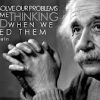 996
996Let a be the angle between the forces P and Q. Now from the given conditions, we have
R2 + P2 + Q2 + 2PQ cos α …(1)
and (2R)2 + P2 + (2Q)2 + 2P(2Q)cos α
4R2 = P2 + 4Q2 + 4PQ cosα …(2)
and (2R)2 = P2 + (–Q)2 + 2P (–Q) cosα
=> 4R2 = P2+Q2 - 2PQ cosα …(3)
Adding (1) and (3), we get 2P2 + 2Q2 – 5R2 = 0 …(4)
Eliminating a from (2) and (3), we get
P2 + 2Q2 – 4R2 = 0 …(5)
From (4) and (5), we have
P2/–8+10 = Q2/–5+8 = R2/4–2 => P2/2 = Q2/3 = R2/2 => P:Q:R::√2: √3: √2.
PROVED.............
 466
466No one for this question ?????????
]
 1
1100 coplanar forces each equal to 10N act on a body.Each force makes an angle π/5 with the preceding force.What is the resultant of the forces.please explain.
The angles which a vector i+j+√2k makes with x,y and z axes respectively r.Explain.
Given vector A =2i+3j the angle between A and y axis is.?
The sum of two forces acting at a point 16N.If the resultant force is 8N and its direction is perpendicular to the minimum force,then the forces are?
What is the angle between vector P and the resultant of (P+Q) and P-Q.?
The length in a seconds hand in a watch is 1cm.The change in velocity of its tip in 15 seconds is?
 Akash Anand Excellent Work Upvote·0· Reply ·2013-06-19 23:55:10
Akash Anand Excellent Work Upvote·0· Reply ·2013-06-19 23:55:10